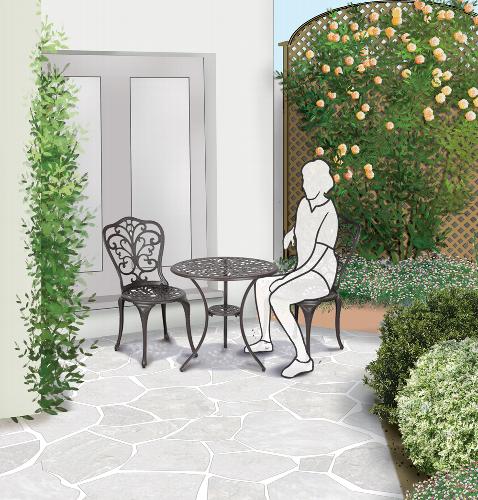As a garden designer I understand how to manipulate spaces of different sizes, aspects and levels to turn them into places of beauty, utility, sanctuary and well-being, that align with the vision my clients have for their gardens. In order to do this the most important task I perform, through discussion with the client, is to draw out and expand their ideas, thoughts, dreams and information to formulate and determine an exact brief on which to work from.
With this in mind, the importance of what you want your garden to be and how you want to use the garden is fundamental to delivering the garden of your dreams. In this series of blogs, I will explore the thought process required to do just that
“What do you want the garden to provide”?
When I visit potential clients, I initially like to have a preliminary look around the garden with them, and during this shared walk I introduce this first question. On some occasions, what might seem to be a very basic question, induces a look of ‘rabbit in the headlights' with some clients giving the impression they are sitting in the black leather chair on Mastermind.
On the surface it would appear a straight forward question and because of this, the response can sometime be the first thing that comes to mind. For example it may be “A garden for entertaining” or a “garden for the children” or a “garden for relaxing in”. These are very normal responses and unlike Mastermind, it is not a subject you can “pass” on. These initial responses are quite naturally broad statements. It is then up to me to spend time with the client drawing down on these subjects to refine the idea.
To explain further, in this first instance, if we take “a garden for entertaining” as the major influence my questions would begin with;
How many people do you usually entertain? This relates to the amount of space required and shape of the space.
What time of year do you entertain? Any outdoor all weather structure may need to be heated and protect guests from the elements.
How often do you entertain? Does the cover need to be permanent or could it be demountable.
Do you intend to cook for your guests or just offer drinks? Is the cooking complex or simple, (i.e.) are you looking for an outdoor kitchen or a modest BBQ?
Does the area require privacy? Over the last few years, this has become quite a big deal, particularly where modern housing estates are concerned as they aren't always built with privacy in mind, so this tends to come high up on the list of priorities.
Whilst the questions above are simple the detail behind each question is more involved and will prompt further questions.
The importance of numbers
To look at just the first question in slightly more detail gives some understanding of the thought process a designer should be going through.
If the answer to question 1 is ‘more than 4', then the next question is whether its formal dining (with guests sitting at a table) or a more relaxed entertaining idea with guests eating off of plates on their laps.
The dimensions shown in the diagram below should be considered for table dining and is highly dependent on the table shape, as modern dining tables come in all sorts of shapes and sizes. These dimensions allow for comfortable dining with space allowing guests to pass by other diners without asking them to ‘squeeze in'. I should also mention there will be variations to this rule particularly when it comes to space required for wheelchair users. Conversely, it's reasonable and sometime necessary to reduce the ‘walk by' dimension, however limiting access around the table introduces a degree of compromise.
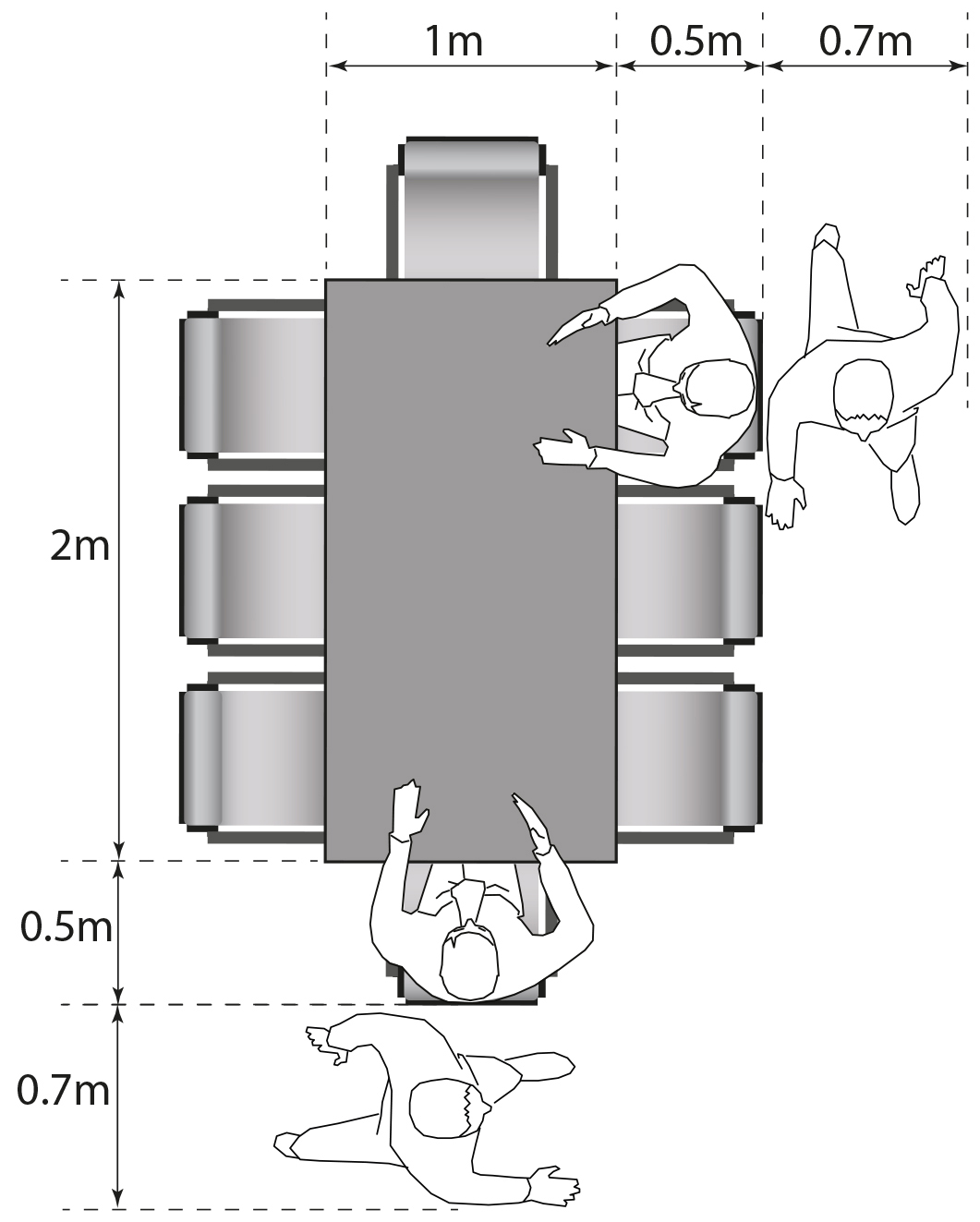
The table configuration will often have an impact, as would be the case if the table is a pre-constructed affair, such as the ‘picnic' style tables often used in beer gardens (shown right). These tend to have much narrower seating as part of the overall width and can be used if space is tight. They are less formal too.
If it's a more relaxed form of entertaining you're after then this can just be based on the number of chairs needed and space available and often guests may be able to sit on low walls or even on the ground (weather dependent).
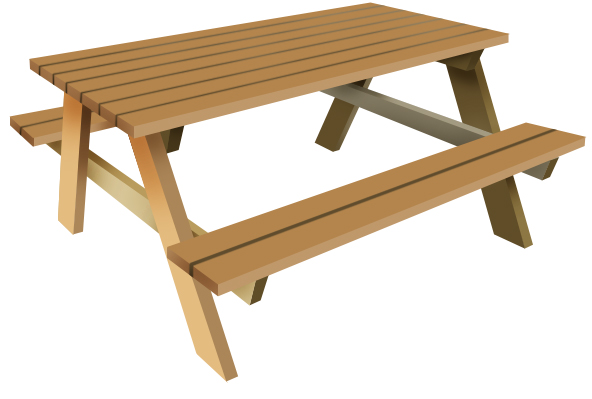
One specific example
In the context of a round table for 4 people, similar rules apply. The ‘walk by' can be narrower due there being only a single chair to pass.
It's also worth bearing in mind planting around a dining space, as this will usually infringe on the space.
The example shown below is one where I used a circular patio in a small garden. Shown at 1:50 scale demonstrates how tight the space is for two people in a secluded private dining area. Although the overall diameter of the patio circle is 2.8m, which appears on the face of it ample room, the table, at just under 0.9m demonstrates that it would be too confined for 4 people especially, when plants are used to soften the edges. The walk by dimension is almost completely lost but this worked exceptionally well in this garden as the client just wanted a private, intimate space just for two.
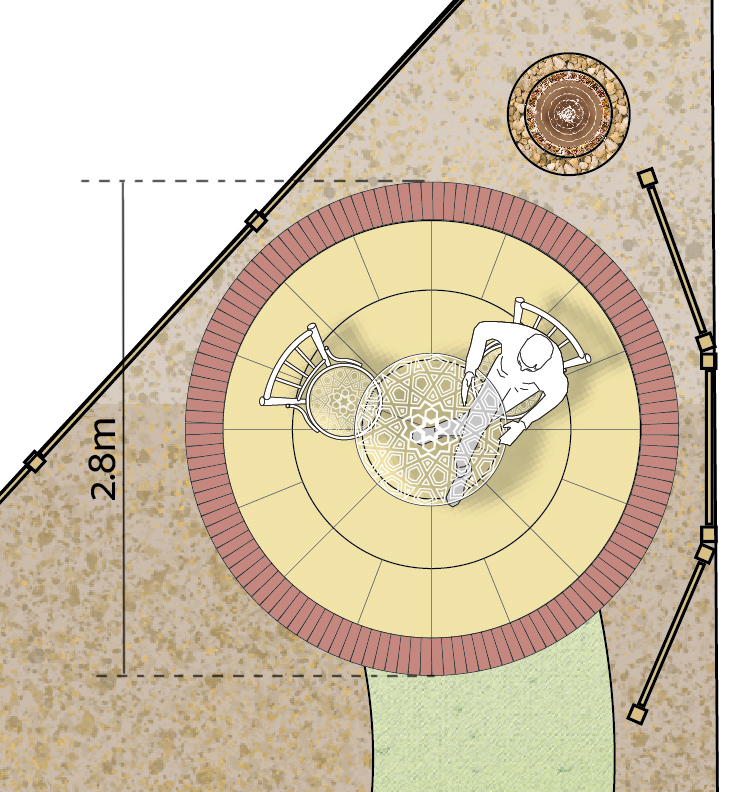
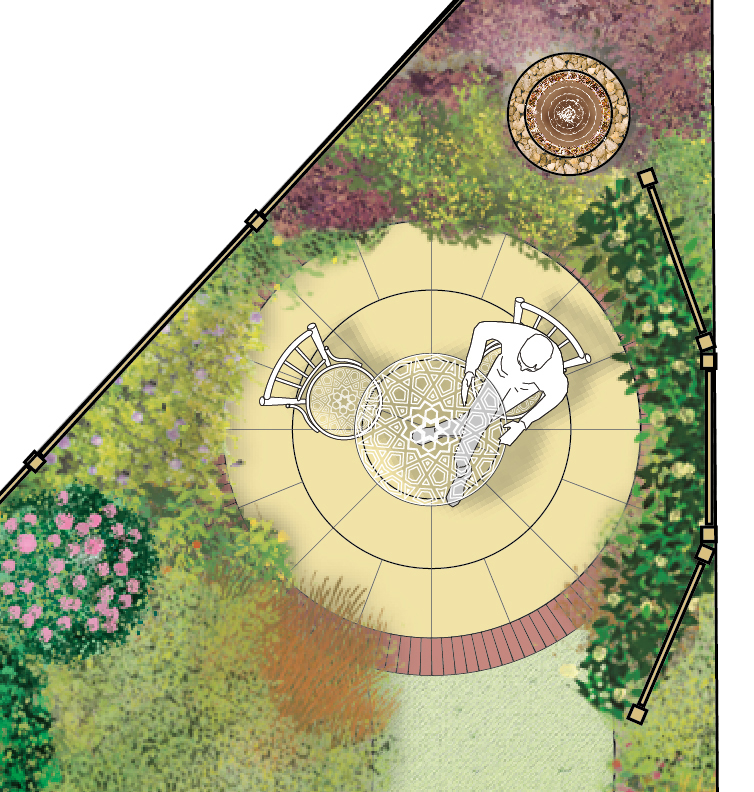
Other considerations
So, there are many things to consider when laying out a dining area in a garden and dimensions may only form part of that process. All of the questions in the list, plus questions on orientation and proximity to the house itself, will have an impact on the layout and all of these will be inexorably linked to cost and that's where a designer comes to the fore, with solutions to match what you want with what fits into the budget.

